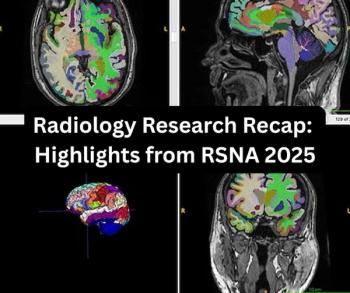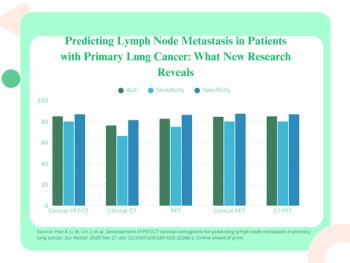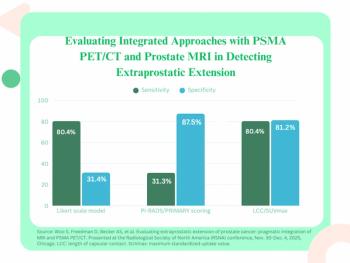
Can Generative AI Facilitate Simulated Contrast Enhancement for Prostate MRI?
Deep learning synthesis of contrast-enhanced MRI from non-contrast prostate MRI sequences provided an average multiscale structural similarity index of 70 percent with actual contrast-enhanced prostate MRI in external validation testing from newly published research.
New research showed that simulated contrast-enhanced MRI provided a high multiscale structural similarity index and robust inter-reader agreement with contrast-enhanced MRI in diagnosing clinically significant prostate cancer.
For the retrospective study, recently published in
The researchers found that simulated contrast-enhanced MRI demonstrated an average 70 percent multiscale structural similarity index with actual contrast-enhanced
“Excellent concordance of lesion conspicuity in the peripheral zone and transition zone was observed between acquired and simulated contrast-enhanced imaging, even in patients with insufficient DWI quality,” wrote lead study author Hongyan Huang, M.D., who is affiliated with the Department of Radiology at Shenzhen Nanshan People’s Hospital and Shenzhen University in Guangdong, China, and colleagues.
The study authors added that changes from initial PI-RADS 3 assessments to PI-RADS 4 scoring occurred in 10.5 percent of patients after the addition of simulated contrast-enhanced MRI scans to biparametric MRI.
“This score change may have increased the depiction of clinically significant prostate cancer; reduced unnecessary biopsies; or enabled additional targeted biopsy, which is important for management decisions in patients who have not undergone biopsy, particularly given the trend toward avoiding biopsy in patients with low-risk PI-RADS 3 scores,” emphasized Huang and colleagues.
(Editor’s note: For additional content on prostate cancer imaging, click
In an
However, noting that contrast-enhanced MRI is not considered a primary defining sequence for PI-RADS scoring, Drs. Neji and Goh suggested that generative AI may have merit in this context.
“Omitting intravenous contrast material may reduce scanning time, may be more cost effective, and may allow more male patients access to MRI, an important consideration with the projected incidence of prostate cancer. Amid ongoing debate and with results of prospective trials yet to be published, research into generative artificial intelligence (AI) to synthesize contrast-enhanced MRI scans is timely and relevant,” noted Dr. Neji, a senior lecturer in magnetic resonance physics and computing at the School of Biomedical Engineering and Imaging Sciences at King’s College in London, and Dr. Goh, a professor and head of the Department of Cancer Imaging at the aforementioned institution.
(Editor’s note: For related content, see “
In regard to study limitations, the study authors conceded potential patient selection bias with the retrospective nature of the research. They pointed out that bowel and smooth muscle movements may have comprised co-registration among MRI sequences and added that the requirement of T1-weighted imaging for simulated contrast enhancement may adversely affect broader application of the model.
Newsletter
Stay at the forefront of radiology with the Diagnostic Imaging newsletter, delivering the latest news, clinical insights, and imaging advancements for today’s radiologists.



























